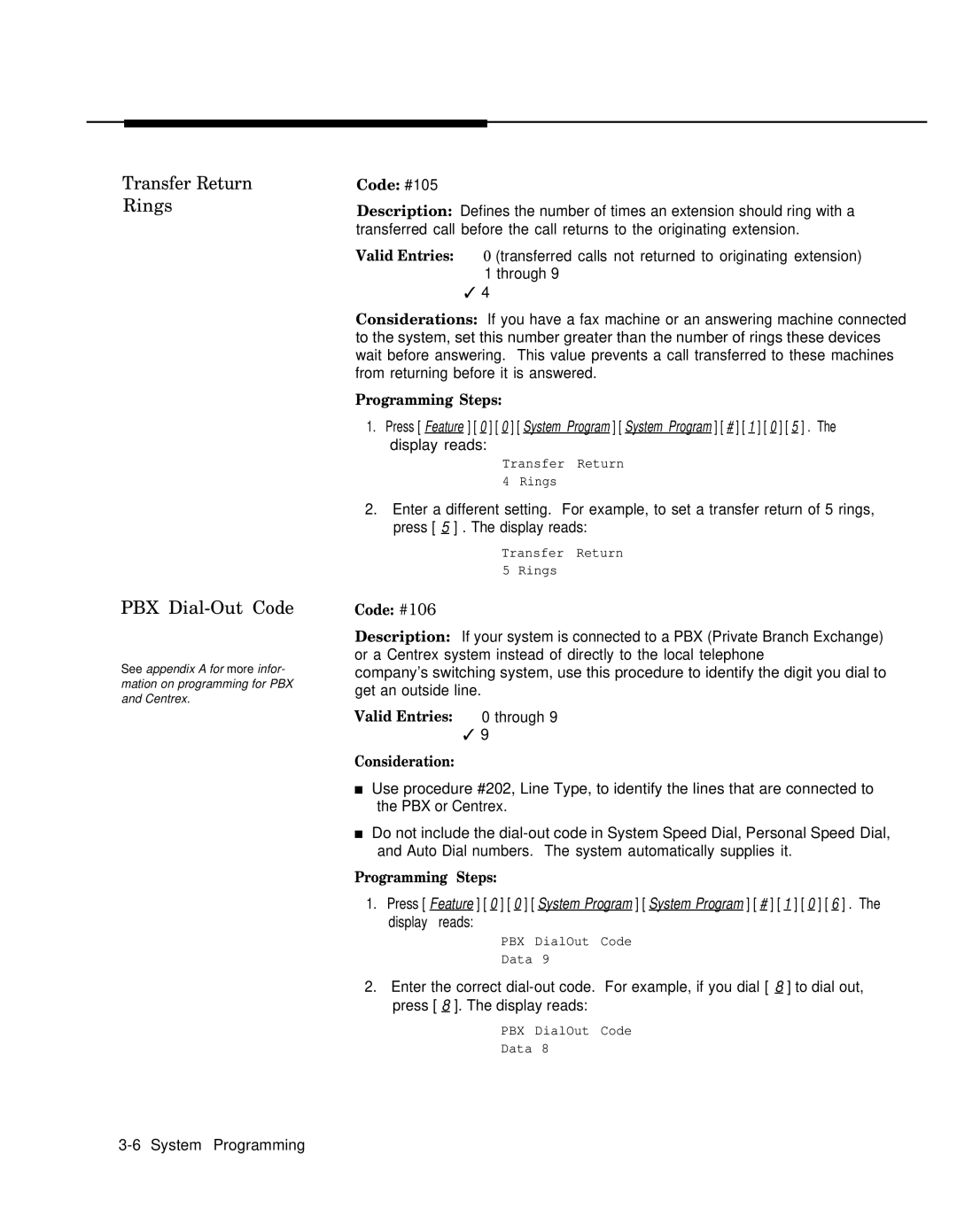Transfer Return
Rings
PBX Dial-Out Code
See appendix A for more infor- mation on programming for PBX and Centrex.
Code: #105
Description: Defines the number of times an extension should ring with a transferred call before the call returns to the originating extension.
Valid Entries: 0 (transferred calls not returned to originating extension) 1 through 9
✓4
Considerations: If you have a fax machine or an answering machine connected to the system, set this number greater than the number of rings these devices wait before answering. This value prevents a call transferred to these machines from returning before it is answered.
Programming Steps:
1.Press [ Feature ] [ 0 ] [ 0 ] [ System Program ] [ System Program ] [ # ] [ 1 ] [ 0 ] [ 5 ] . The
display reads:
Transfer Return
4Rings
2.Enter a different setting. For example, to set a transfer return of 5 rings, press [ 5 ] . The display reads:
Transfer Return
5 Rings
Code: #106
Description: If your system is connected to a PBX (Private Branch Exchange) or a Centrex system instead of directly to the local telephone
company’s switching system, use this procedure to identify the digit you dial to get an outside line.
Valid Entries: | 0 through 9 |
✓9
Consideration:
■Use procedure #202, Line Type, to identify the lines that are connected to the PBX or Centrex.
■Do not include the
Programming Steps:
1.Press [ Feature ] [ 0 ] [ 0 ] [ System Program ] [ System Program ] [ # ] [ 1 ] [ 0 ] [ 6 ] . The
display reads:
PBX DialOut Code
Data 9
2.Enter the correct
PBX DialOut Code
Data 8
